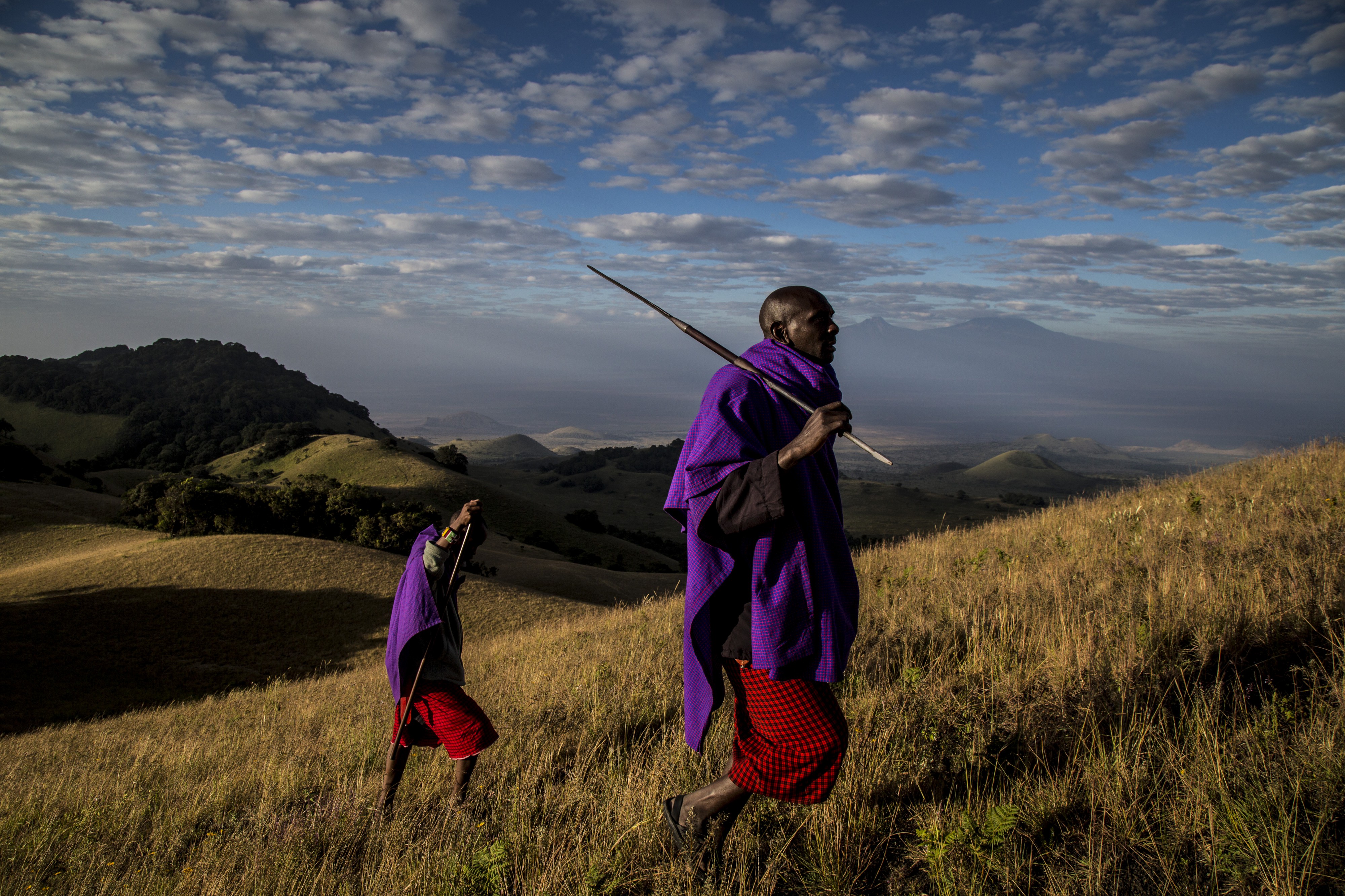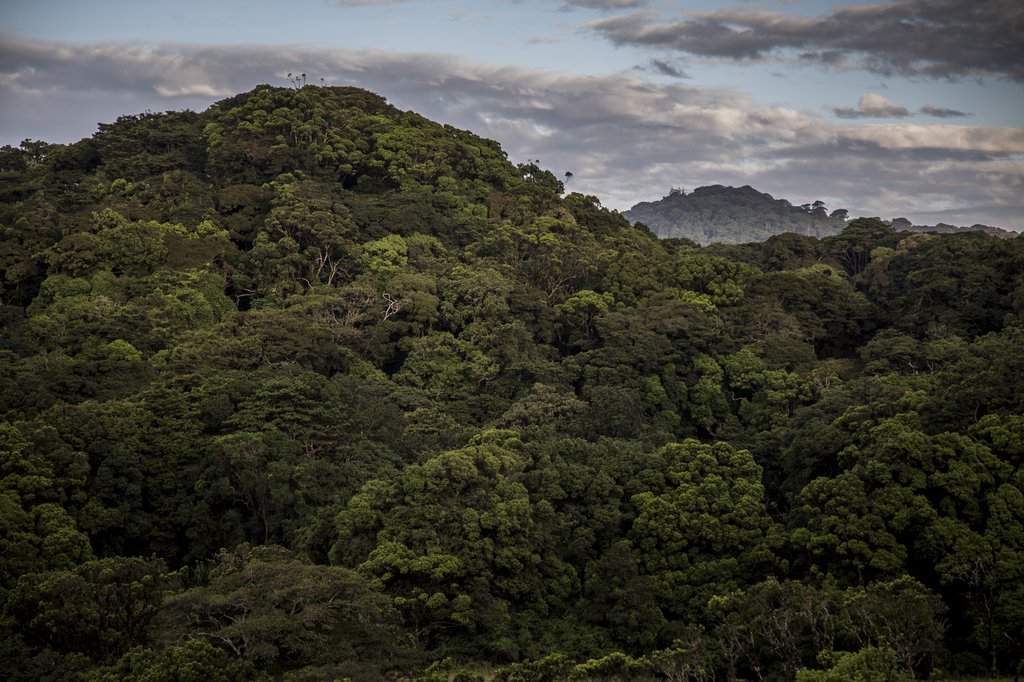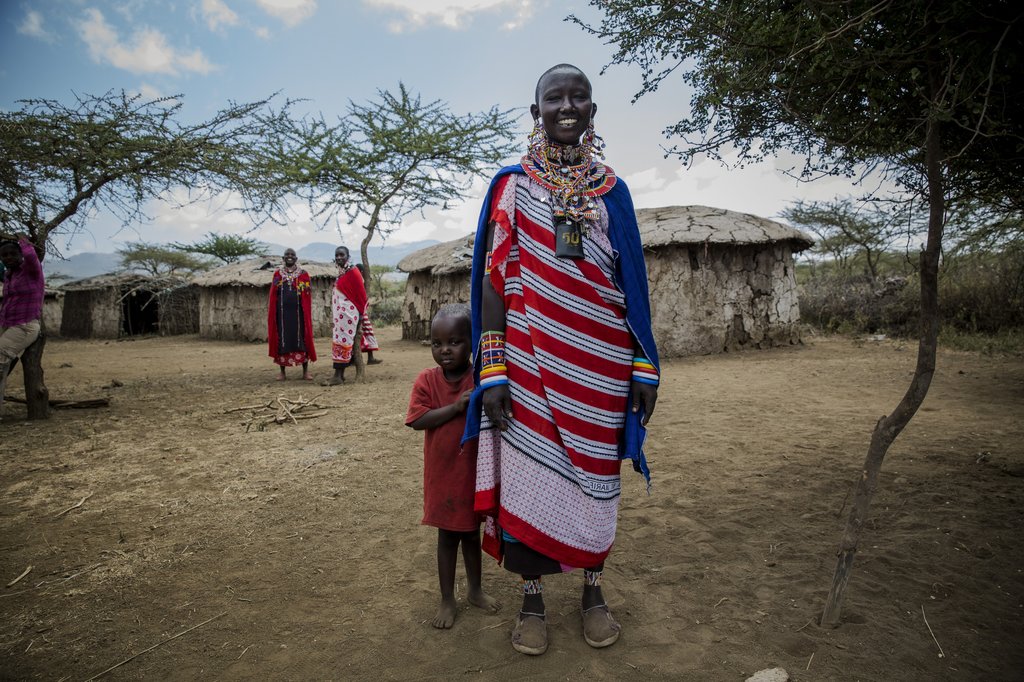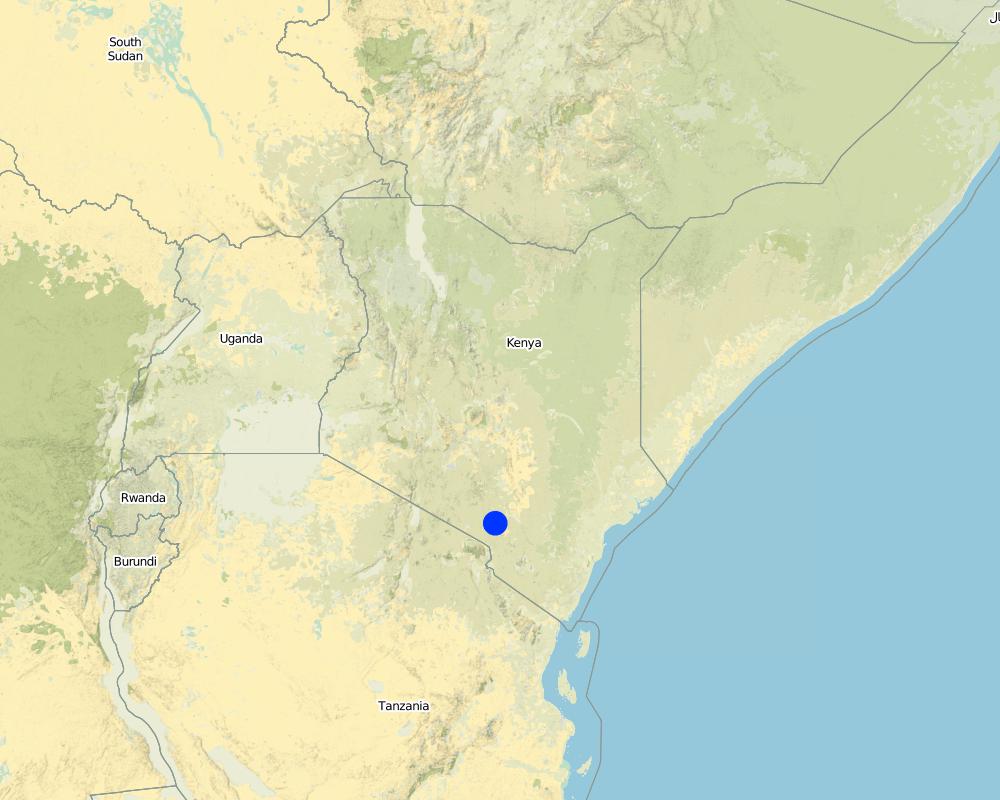Chyulu Hills Community REDD + Project [Kenya]
- Création :
- Mise à jour :
- Compilateur : Peter Tyrrell
- Rédacteur : Christina Ender
- Examinateurs : Rima Mekdaschi Studer, Hanspeter Liniger, Donia Mühlematter
approaches_3426 - Kenya
Voir les sections
Développer tout Réduire tout1. Informations générales
1.2 Coordonnées des personnes-ressources et des institutions impliquées dans l'évaluation et la documentation de l'Approche
Nom du projet qui a facilité la documentation/ l'évaluation de l'Approche (si pertinent)
Book project: Guidelines to Rangeland Management in Sub-Saharan Africa (Rangeland Management)1.3 Conditions relatives à l'utilisation par WOCAT des données documentées
Quand les données ont-elles été compilées (sur le terrain)?
28/02/201
Le compilateur et la(les) personne(s) ressource(s) acceptent les conditions relatives à l'utilisation par WOCAT des données documentées:
Oui
1.4 Références au(x) questionnaire(s) sur les Technologies de GDT
2. Description de l'Approche de GDT
2.1 Courte description de l'Approche
The Chyulu Hills REDD+ project combines two government agencies, three local NGOs and four communities together under a unified banner, the Chyulu Hills Conservation Trust (CHCT). The objective is to set-up a 30-year ‘payment for ecosystem service’ scheme in the landscape. A main goal of the project is to improve grazing and livestock management to prevent further degradation of the rangeland and forest resources.
2.2 Description détaillée de l'Approche
Description détaillée de l'Approche:
The Chyulu Hills, in southern Kenya, are a volcanic mountain range approximately 100 km long, and form a central pillar of the much larger Tsavo-Amboseli ecosystem which constitutes several national parks, forest reserves and community-owned pastoral land. The emission reduction project established in 2011 under the REDD+ umbrella (Reducing Emissions from Deforestation and forest Degradation) covers 410,000 hectares of both community and public land around the hills. REDD+ offers financial incentives to developing countries to manage and use their forests responsibly. Payments are channelled through the Trust to support land users for quantifiably reducing emissions.
REDD+ creates financial value for the carbon stored in forests by offering incentives for developing countries to reduce emissions from forested lands and invest in low-carbon paths to sustainable development. REDD+ goes beyond simply stopping further deforestation and forest degradation by including sustainable management and enhancement of forest carbon stocks.
This area is home to 140,000 people including Maasai pastoralists to the west, and Kamba farming communities to the east. This land is widely used for livestock production; must of it under communal tenure. Recent pressures, notably increasing populations and changes in land tenure, have led to unsustainable uses of natural resources, threatening the functioning of the ecosystem, through the degradation of the rangeland and over-exploitation of forest resources. This includes cutting of trees for firewood, charcoal, uncontrolled fires, and weakening of traditional grazing management systems.
The Chyulu Hills REDD+ project aims to protect its rangeland and forest landscapes by creating an alternative income opportunity, and improving both livestock and rangeland management, while preventing the emission of over 18 million tons of carbon dioxide over the project’s 30-year lifetime.
This is the first REDD+ project in Kenya that is fully owned and managed by the local community, a vital factor in ensuring sustained impact. Through the project, land users receive financial support per hectare for maintaining or improving carbon stocks above and below ground. Previous REDD+ projects have often been criticised for not properly engaging local communities or addressing their needs.
To achieve this, the Chyulu Hills Conservation Trust (CHCT) was formed in 2015 to act as the project governing body. The Trust represents multiple stakeholders from the community, government, and local NGOs including the Maasai Wilderness Conservation Trust (MMWCT), Big Life Foundation (BLF), and the David Sheldrick Wildlife Trust (DSWT). The government is also represented through the Kenya Wildlife Service (KWS) and Kenya Forest Service (KFS), whose mandates include the Chyulu Hills National Park and the Kibwezi Forest Reserve. The national park is used on an informal basis by the communities for dry season grazing, although access is severely limited by water, and also by disease.
The communities are represented by four Maasai group ranches, who manage the land and its resources. These group ranches are areas of communally titled land. The three NGOs have the technical capacity to advise, provide strategic guidance and assist in implementation of the project activities. They are already involved in helping communities to develop and manage conservation areas, and to improve sustainable use of natural resources.
Proceeds from the sale of Voluntary Emission Reductions (VERs) flow through the CHCT to initiatives/projects which benefit the community and environment. Early in 2017 the first verification was completed, and shortly afterwards the first marketable carbon credits went on sale, providing income to the CHCT for protecting and improving their carbon stock.
To ensure equitable and transparent sharing of proceeds from carbon sales, a revenue allocation model was implemented to fund (i) office and project costs, (ii) discretionary sub-projects, and (iii) to provide strategic investments to counter drivers of deforestation and land degradation.
The proposed investments into the CHCT area to improve rangeland condition comprise several components. The first component is to support grazing management plans to help restore governance over resources, and ensure sustainable use. This should encourage the recovery of perennial grasses, increase grass cover, and create a heterogeneous forage base. The second focus is value addition to beef marketing through collaborative partnerships. This should encourage pastoralists to focus on management of the rangelands to support the production of higher quality cattle. In the long run this will increase revenue generation for livestock farmers, and stimulate the communities to manage their rangeland better.
2.3 Photos de l'approche
2.5 Pays/ région/ lieux où l'Approche a été appliquée
Pays:
Kenya
Région/ Etat/ Province:
Kajiado and Makueni
Autres spécifications du lieu :
Chyulu Hills
Map
×2.6 Dates de début et de fin de l'Approche
Indiquez l'année de démarrage:
2011
Commentaires:
The approach began in 2011, but the REDD+ project's form start date is September 2013. Please see the timeline figure.
2.7 Type d'Approche
- fondé sur un projet/ programme
2.8 Principaux objectifs de l'Approche
Provide carbon based funding to a local community trust to protect and improve the management of the Chyulu Hills and the surrounding ecosystem.
This project aims to:
- Deliver community benefits (such as health care, school bursaries, and income generating activities)
- Enhance forest protection (through protection, management and monitoring)
- Protect biodiveristy
- Restore degraded rangelands (improved livestock management and marketing)
- Enhance local governance
2.9 Conditions favorisant ou entravant la mise en œuvre de la(des) Technologie(s) appliquée(s) sous l'Approche
normes et valeurs sociales/ culturelles/ religieuses
- entrave
Consensus needs to be built between all community members who own and manage land under a communal title. This requires many meetings at various scales and with multiple stakeholders to ensure that consensus is reached, and that the resulting project is fair for all.
disponibilité/ accès aux ressources et services financiers
- favorise
Financial resources were made available at the start by two international NGOs, namely the African Wildlife Foundation (AWF); and Conservation International (CI), which are not on the formal Board of CHCT. This allowed for the expensive process to be undertaken, including development of the Trust, and the process of carbon stock validation and sales.
- entrave
The sale of carbon credits is a limiting factor in revenue generation to run the project and implement activities.
cadre institutionnel
- favorise
Creation of the Chyulu Hills Conservation Trusts as a landscape institution ensures that all partners (community, government and NGO's) act for the good of the landscape, manage it collectively, and develop consensus on this approach.
collaboration/ coordination des acteurs
- favorise
The Chyulu Hills Conservation Trust has a project office in the landscape and a Board of Trustees overseeing project implementation which greatly increases collaboration of actors with joint work plans.
cadre juridique (régime foncier, droits d'utilisation des terres et de l'eau)
- entrave
Different parts of the landscape are managed by various authorities, such as National Park and Forest reserves by the government agencies, Kenya Wildlife Service and Kenya Forest Service respectively. The remaining area is under community land, which is titled as group ranches, a form of community land tenure in Kenya. The division between the two groups, the government and the community, can potentially cause conflict over access to forage, forest resources and water use.
connaissances sur la GDT, accès aux supports techniques
- favorise
The incorporation of a diverse set of NGOs into the project brings a range of SLM options and access to technical support.
3. Participation et rôles des parties prenantes impliquées dans l'Approche
3.1 Parties prenantes impliquées dans l'Approche et rôles
- exploitants locaux des terres / communautés locales
Kuku Group Ranch
Kuku A Group Ranch
Mbirikani Group Ranch
Rombo Group Ranch
The communities are the owners of livestock and natural resources. They are nee in the formulation of strategies, in particular grazing management, in their areas.
- ONG
Maasai Wilderness Conservation Trust
Big Life Foundation
David Sheldrick Wildlife Trust
These three NGO oversee the management of natural resources (each has agreements with the respective communities) and provide support for administration of the grants, technical and implementing expertise, and strategy development. They each operate in distinct geographical areas across both community and public land.
- gouvernement national (planificateurs, décideurs)
Kenya Wildlife Service
Kenya Forest Service
These two stakeholders are responsible for the management and project implementation within the officially gazetted protected areas. The Kenya Forest Service is instrumental in the national decision making and policy for the national REDD + programme.
- organisation internationale
Conservation International
Functions as an advisory board member, providing strategic and technical guidance.
3.2 Participation des exploitants locaux des terres/ communautés locales aux différentes phases de l'Approche
| Participation des exploitants locaux des terres/ communautés locales | Spécifiez qui était impliqué et décrivez les activités | |
|---|---|---|
| initiation/ motivation | interactive | Initial conversations were motivated by two international NGOs (Conservation International and the African Wildlife Foundation). The project partners then held a large number of community meetings under the principle of free prior and informed consent (FPIC) to develop a unified platform to begin the process of investigating a mechanism in order to create an inclusive and fair REDD+ project (mainly lead by KWF). |
| planification | interactive | Planning of the project activities to be carried out under the REDD+ project was undertaken through a wide consultative process led by Conservation International, via community meetings and key information interviews. These are all captured in the Project Development Document (PDD) freely available online. |
| mise en œuvre | interactive | Implementation of the project was spearheaded by the project partners with technical and strategic guidance from Conservation International, including the validation, verification and initial sales of carbon credits. Local communities were closely involved in the development of the revenue allocation plan, the Trust structure, and development of the project activities and work plan. |
| suivi/ évaluation | interactive | M&E is conducted by all involved NGOs and government agencies, and coordinated by one NGO currently holding the Project Office. Community members are integral to the collection and interpretation of data during this process. |
3.4 Prises de décision pour la sélection de la Technologie/ des Technologies
Indiquez qui a décidé de la sélection de la Technologie/ des Technologies à mettre en œuvre:
- tous les acteurs concernés dans le cadre d'une approche participative
Expliquez:
Activities under this plan are implemented through both SLM experts and communities. The grazing management and livestock production activities originate from conversations between the communities, NGO partners and experts on rangeland management and livestock marketing and sale. These technologies are still in the early stages of development.
Spécifiez sur quelle base ont été prises les décisions:
- l'évaluation de connaissances bien documentées en matière de GDT (prises de décision fondées sur des preuves tangibles)?
- les résultats de recherches?
- expériences et opinions personnelles (non documentées)
4. Soutien technique, renforcement des capacités et gestion des connaissances
4.1 Renforcement des capacités/ formation
Une formation a-t-elle été dispensée aux exploitants des terres/ autres parties prenantes?
Oui
Spécifiez qui a été formé:
- exploitants des terres
- personnels/ conseillers de terrain
Si pertinent, spécifiez le genre, l'âge, le statut, l'ethnie, etc.
A significant number of training has taken place so far. One example is training local women on grass seed bank management and farming, as well as building capacity of local scouts in wildlife data collection.
Formats de la formation:
- sur le tas
- zones de démonstration
4.2 Service de conseils
Les exploitants des terres ont-ils accès à un service de conseils?
Non
4.3 Renforcement des institutions (développement organisationnel)
Des institutions ont elles été mises en place ou renforcées par le biais de l'Approche?
- oui, beaucoup
Spécifiez à quel(s) niveau(x), ces institutions ont été renforcées ou mises en place:
- local
- régional
Décrivez l'institution, ses rôles et responsabilités, ses membres, etc.
The Chyulu Hills Conservation Trust was established through this approach to bring together the two government agencies, the three local NGOs, and four community groups. The organisation is continually being strengthened with direct funding provided to the project office.
Précisez le type de soutien:
- financier
- renforcement des capacités/ formation
- équipement
Donnez plus de détails:
One of the local NGOs has been appointed as in-charge of the Project Office, holding the responsibility for oversight and coordination across all partners, as well as management of the verification and audit events.
4.4 Suivi et évaluation
Le suivi et l'évaluation font ils partie de l'Approche? :
Oui
Commentaires:
The REDD + carbon scheme documents forest, woody cover, and soil carbon, and is the main monitoring mechanism. Monitoring of rangeland condition, such as species composition, grass quality and quantity and ground cover is undertaken to evaluate the effect of changes in grazing management and livestock marketing.
Si oui, ce document est-il destiné à être utilisé pour le suivi et l'évaluation?
Non
4.5 Recherche
La recherche a-t-elle fait partie intégrante de l’Approche?
Oui
Spécifiez les thèmes:
- économie/ marketing
- écologie
Donnez plus de détails et indiquez qui a mené ces recherches:
Research was conducted to establish the potential of the landscape for carbon sequestration for the REDD+ scheme.
5. Financement et soutien matériel externe
5.1 Budget annuel de la composante GDT de l'Approche
Si le budget annuel précis n'est pas connu, indiquez une fourchette:
- 100 000-1 000 000
Commentez (par ex. principales sources de financement/ principaux bailleurs de fonds):
The initial implementation of the project cost more than 1 million USD over the course of six years. This was used to build community consensus, establish trust, measure carbon stocks within the areas and obtain validation and verification under two internationally acknowledged standards (the Verified Carbon Standard, and the Climate, Community and Biodiversity Standard.
5.2 Soutiens financiers/ matériels fournis aux exploitants des terres
Les exploitants des terres ont-ils reçu un soutien financier/ matériel pour la mise en œuvre de la Technologie/ des Technologies?
Oui
Si oui, spécifiez le(s) type(s) de soutien, les conditions et les fournisseurs:
Implementation of the project was supported through funding by two international NGOs, and enhanced by project partners.
5.3 Subventions pour des intrants spécifiques (incluant la main d'œuvre)
- aucun
5.4 Crédits
Des crédits ont-ils été alloués à travers l'Approche pour les activités de GDT?
Non
5.5 Autres incitations ou instruments
D'autres incitations ou instruments ont-ils été utilisés pour promouvoir la mise en œuvre des Technologies de GDT?
Non
6. Analyses d'impact et conclusions
6.1 Impacts de l'Approche
Est-ce que l'Approche a autonomisé les exploitants locaux des terres, amélioré la participation des parties prenantes?
- Non
- Oui, un peu
- Oui, modérément
- Oui, beaucoup
The Approach ensures communities are the principle beneficiaries of funding received by the Trust; the technologies implemented are for improved rangeland management.
Est-ce que l'Approche a permis la prise de décisions fondées sur des données probantes?
- Non
- Oui, un peu
- Oui, modérément
- Oui, beaucoup
The Approach monitors rangeland and forest resources, including vegetation, carbon stores and biodiversity, which can then be used by the Trust for evidence based decision making.
Est-ce que l'Approche a aidé les exploitants des terres à mettre en œuvre et entretenir les Technologies de GDT?
- Non
- Oui, un peu
- Oui, modérément
- Oui, beaucoup
The Approach provides technical and strategic expertise to communities to implement technologies at the spatial scale relevant to land management.
Est-ce que l'Approche a amélioré la coordination et la mise en œuvre de la GDT selon un bon rapport coût-efficacité?
- Non
- Oui, un peu
- Oui, modérément
- Oui, beaucoup
The Trust brings together community, government and NGO stakeholders in the landscape to improve coordination under joint work plans.
Est-ce que l'Approche a mobilisé/ amélioré l'accès aux ressources financières pour la mise en œuvre de la GDT?
- Non
- Oui, un peu
- Oui, modérément
- Oui, beaucoup
The Approach generates revenue through the sale of carbon credits, which is allocated to projects through the Trust and the revenue allocation model.
Est-ce que l'Approche a construit/ renforcé les institutions, la collaboration entre parties prenantes?
- Non
- Oui, un peu
- Oui, modérément
- Oui, beaucoup
Through the creation of the Chyulu Hills Conservation Trust there is a new institution to build collaboration.
Est-ce que l'Approche a conduit à des emplois, des opportunités de revenus?
- Non
- Oui, un peu
- Oui, modérément
- Oui, beaucoup
Yes, this approach has provided more employment to the local communities, including transfer of new skills.
6.2 Principale motivation des exploitants des terres pour mettre en œuvre la GDT
- augmenter la production
The condition of the rangeland within the area has deteriorated over recent years. There is a recognition among land-users that an approach is needed at the correct scale to restore and mange the rangelands.
- réduire la dégradation des terres
Land degredation is a wide-scale issues, and this approach supports communities to develop grazing managment plans and restoration.
6.3 Durabilité des activités de l'Approche
Les exploitants des terres peuvent-ils poursuivre ce qui a été mis en œuvre par le biais de l'Approche (sans soutien extérieur)?
- oui
Si oui, décrivez de quelle manière:
The collaborative nature of the project, and the establishment of the Trust allows the community to sustain the approach due to the ongoing support of local NGOs and government. If the CHCT cannot sell Carbon Credits via the REDD+ scheme, then there will be severe limitations on the ability of the project to implement activities.
6.4 Points forts/ avantages de l'Approche
| Points forts/ avantages/ possibilités du point de vue de l'exploitant des terres |
|---|
| Communities are directly represented in the implementation of activities through representatives |
| There are clear potential financial benefits derived from the project through internal granting, community projects, and employment. |
| The approach will help improve the production of the rangeland and value of beef based products. |
| Points forts/ avantages/ possibilités du point de vue du compilateur ou d'une autre personne ressource clé |
|---|
| Collaborative approach to Payments for Ecosystem Services (PES) which includes all the stakeholders required for successful implementation, including local representation, technical expertise, and national government agencies. |
| The approach tackles a range of drivers that have led to resource over exploitation and degradation, and has a clear plan and revenue allocation strategy to ensure an effective and equitable implementation of technologies to tackle these drivers. |
6.5 Faiblesses/ inconvénients de l'Approche et moyens de les surmonter
| Faiblesses/ inconvénients/ risques du point de vue de l’exploitant des terres | Comment peuvent-ils être surmontés? |
|---|---|
| Perceived imposition of grazing and rangeland management from NGOs, community leaders and the Trust Collaborative | Development of technologies to be implemented under this approach through the Group Ranch committees and local consultation with landowners. |
| Faiblesses/ inconvénients/ risques du point de vue du compilateur ou d'une autre personne ressource clé | Comment peuvent-ils être surmontés? |
|---|---|
| Dependency on the REDD+ funding channels may lead to financial constraints if carbon credit sales do not happen. | Develop alternative financing mechanism beyond the sale of carbon credit. |
7. Références et liens
7.1 Méthodes/ sources d'information
- interviews/ entretiens avec les spécialistes/ experts de GDT
Interview with key staff at CI
- compilation à partir de rapports et d'autres documents existants
Reports, documents and fact sheets
Liens et modules
Développer tout Réduire toutLiens
Aucun lien
Modules
Aucun module trouvé










